In the spring of 2013 I built a hydroponic system to explore growing food in a controlled environment. The quest to run the system on University of Waterloo campus during the spring 2013 school term led me to start working with the UW Aquaponics Design Team. They were very generous and let me set up the system in their lab space in the Engineering 5 building on campus where it ran for several months.
The System
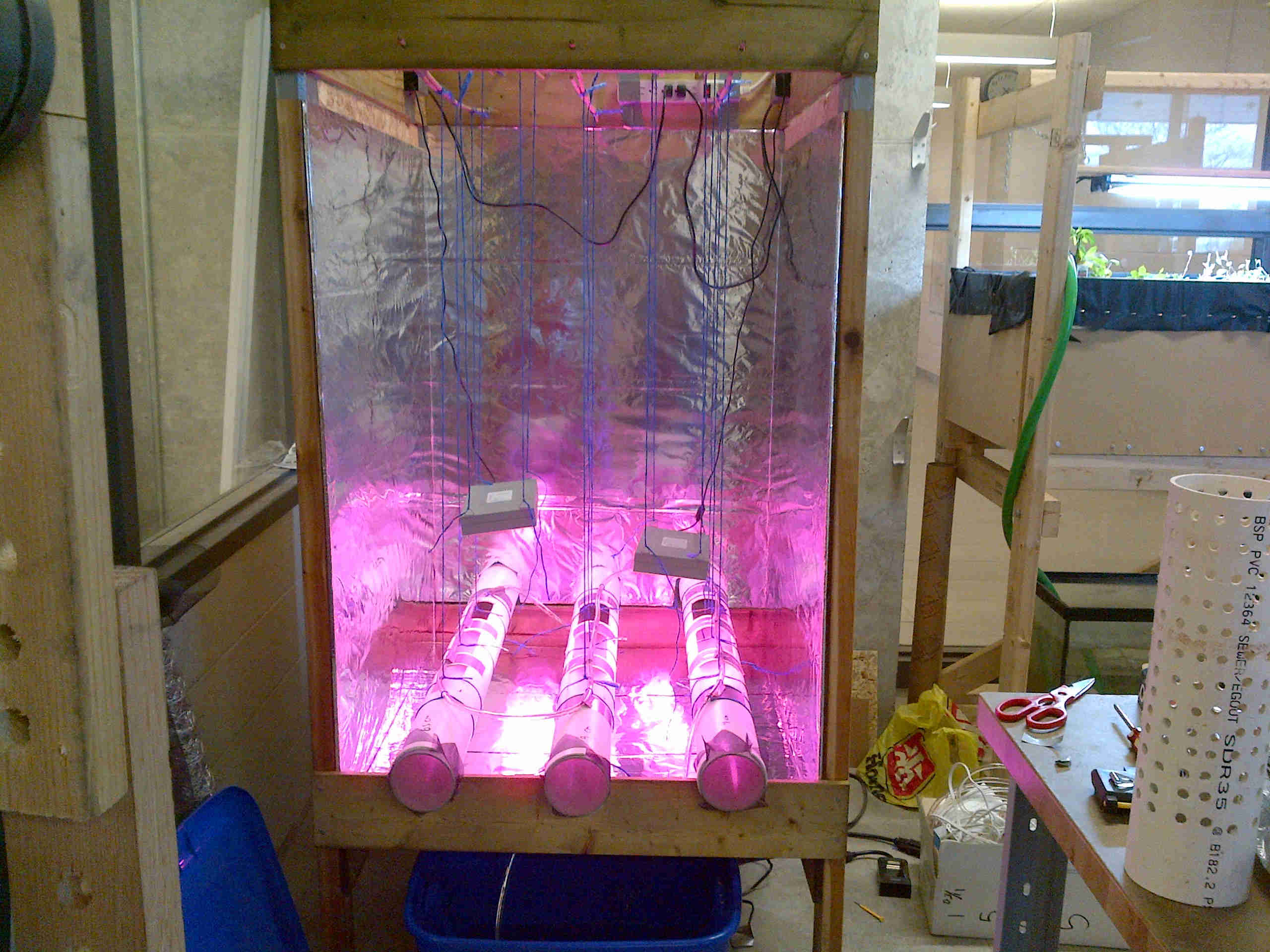
The system design was quite simple - a small pump would lift nutrient rich water up to the hydroton filled grow tubes where it could be uptaken by plant roots and circulate back to the main reservoir by gravity. The lighting panels were suspended using twine coiled around dowels at the top of the box, this allowed for adjusting the height of the lights so as to be constantly around 5 cm above the plant height.
The lights were entirely blue and red LEDs which have proven to be more efficient (lumens per watt) in terms of providing the wavelengths of light that plants use for photosynthesis. The first two lighting panels I bought were each 30W. Though the manufacturer specs suggested better performance, the lux at plant level did not come close to the target of 10,000 lux. A third 120W LED lighting panel was purchased and added between the first two panels before finally adding the plants and starting the system.
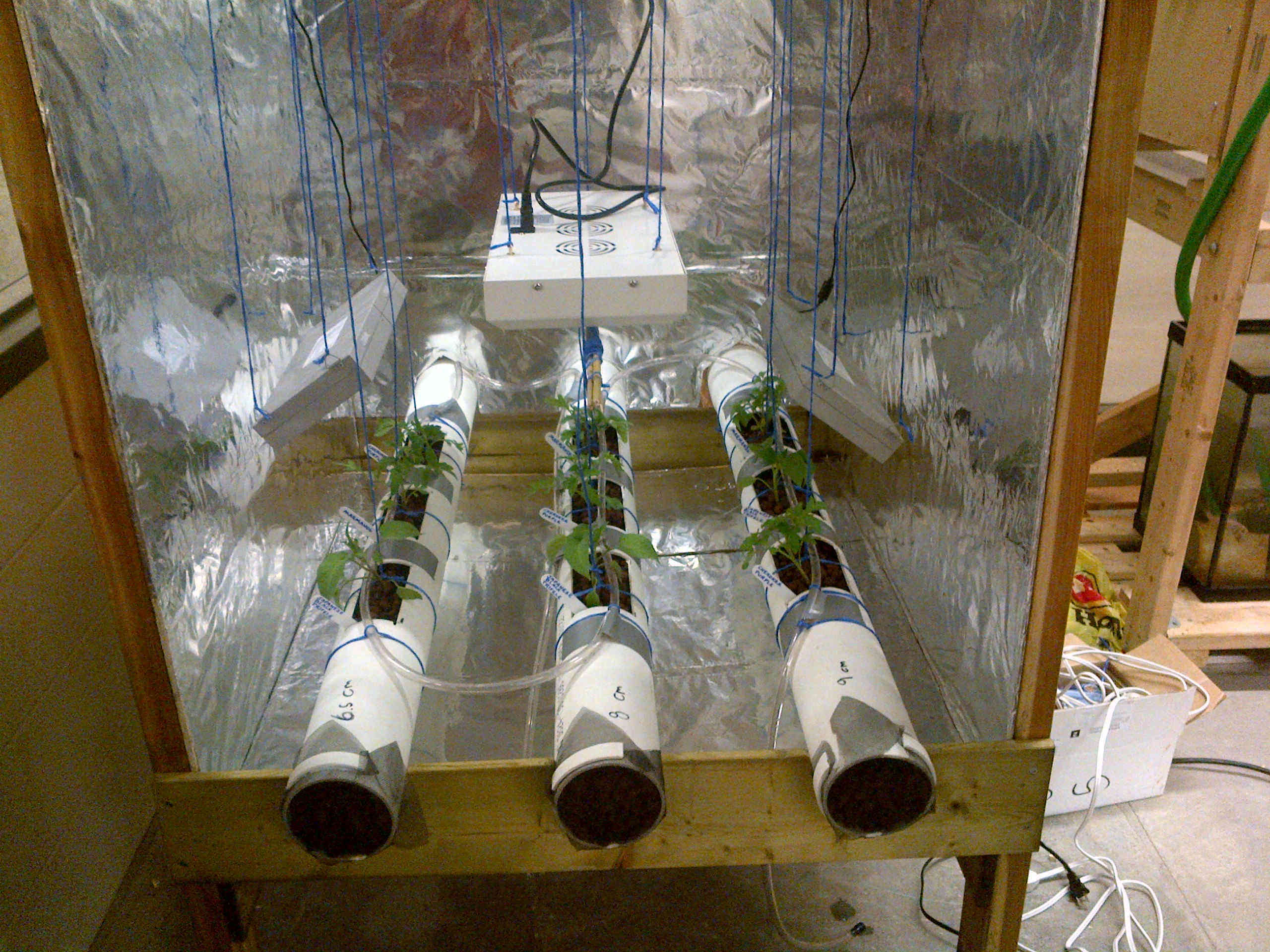
This third panel brought the total lux at the plant leaf level to around 15,000 which proved to be enough for vegetative growth and fruiting. See image below with the added third LED panel turned on.
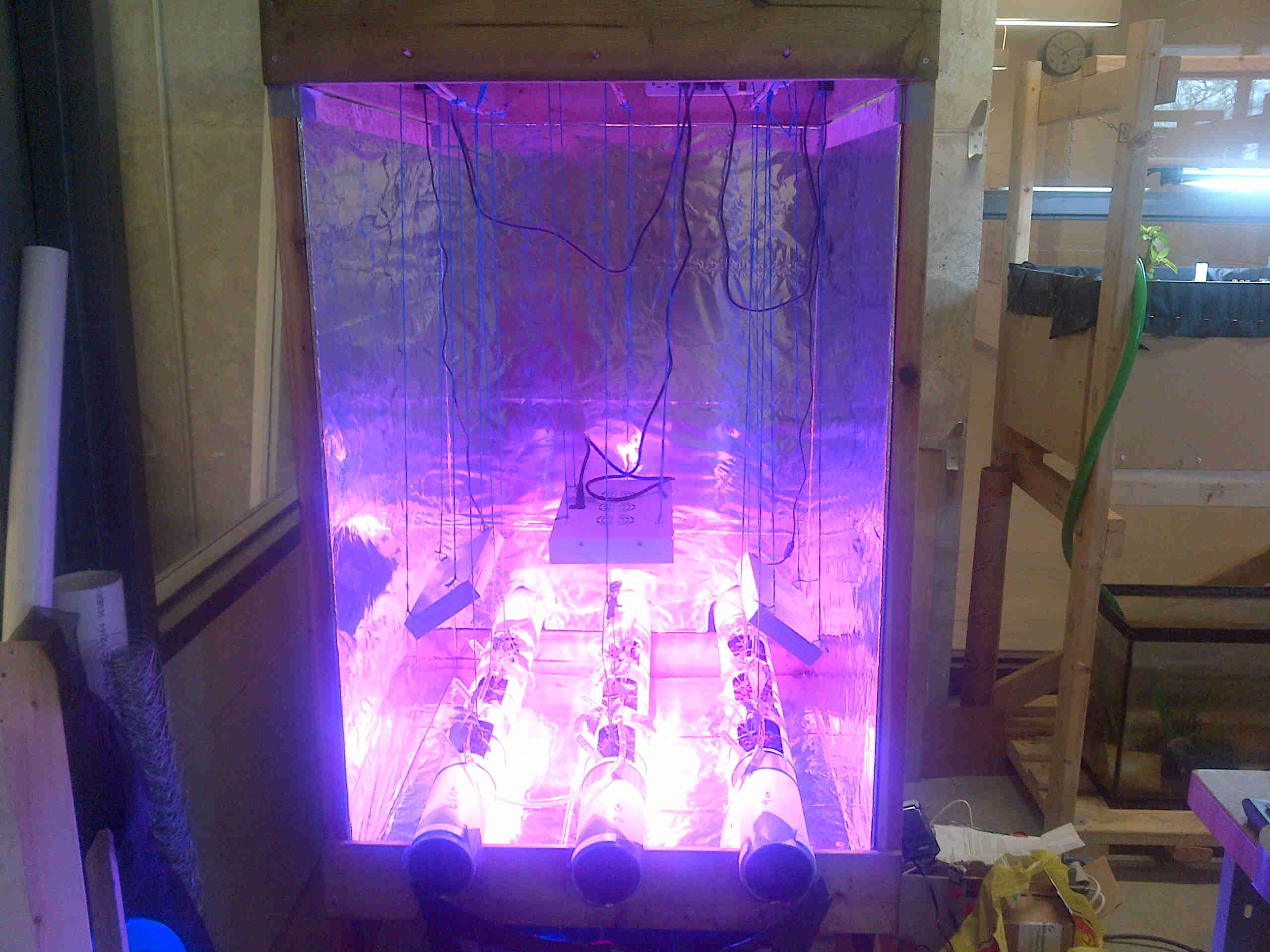
The system ran on a 16 hour daily cycle. The pump was turned on for first 15 minutes of every 2 hours from 6:00 to 22:00. The lights were on constantly 6:00 to 22:00. Nutrient solution was mixed in 25 litre batches, and replaced roughly every 2 weeks.
Results
The system ran for 109 days semi-autonomously with me only having to refill the water and add nutrients every few weeks. Then suddenly the pump failed while I was in Toronto and the plants dried out.
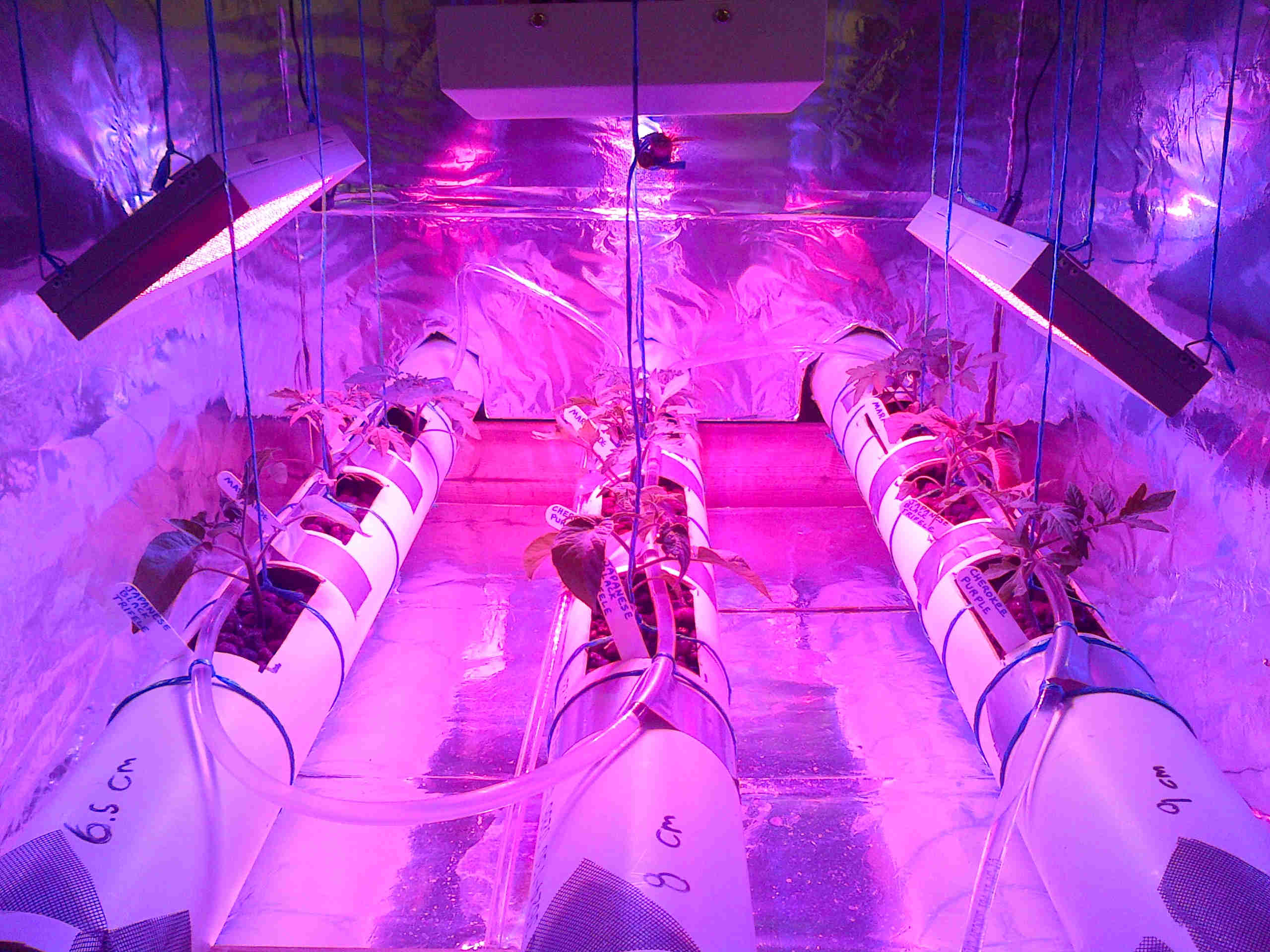
The last photographs were taken last on day 73 though the system continued to grow afterward. The very first tomatoes were just becoming ripe!
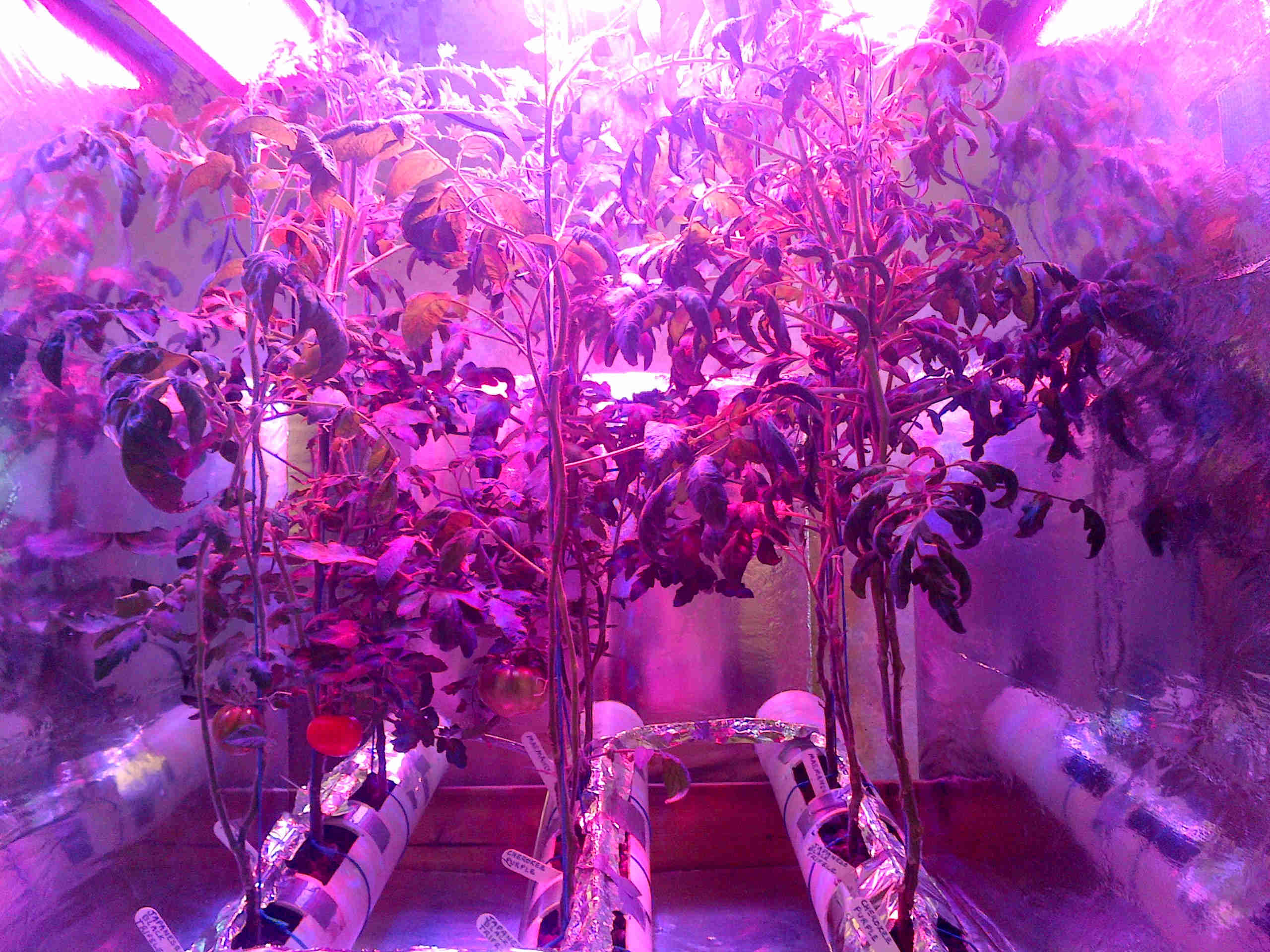
Lessons Learned
1. Autonomous systems require oversight: A failure warning system would have gone a long way, it's either that or more frequent check-ups.
2. Take more pictures: this is mainly referring to the construction stage but it also would have been nice to have a more recent photograph before the system failed and plants died.
